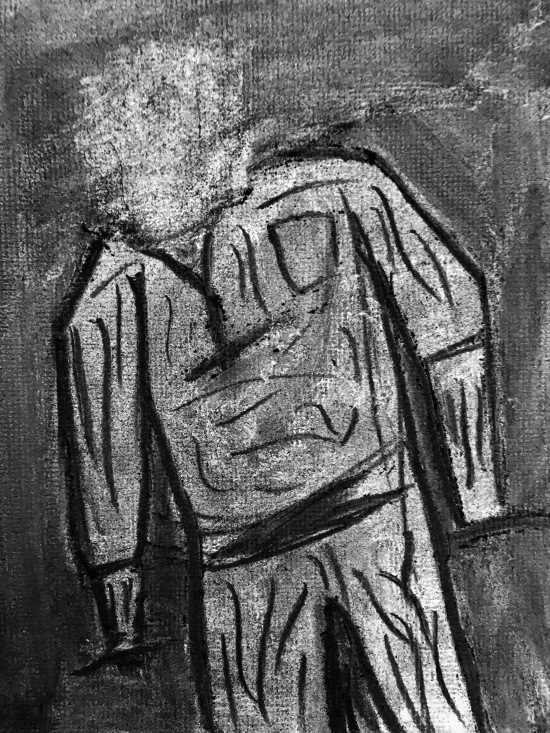A career as a professor provides opportunities to teach, engage in scholarly research, and serve the public. It can be a great gig, providing a good income and a chance to help others. I count myself among the fortunate who get to do this work.
However, I also find myself increasingly troubled by the culture of this vocation.
Put simply, professional success in academe places heavy premiums on jumping through career hoops, conforming to external expectations, and pleasing others in order to get ahead.
Of course, higher education is hardly the only vocation to play this game. However, it is sadly ironic that an endeavor that should celebrate creativity, original thinking, and public education all too often discourages these qualities.
Thinking big thoughts? Sometimes, but not too often
OK, so higher education is all about academic freedom, thinking about and expressing significant ideas, and challenging students to think outside the box, right?
Well, not nearly as often as you might think. Aspiring professors would do well not to be seen as being daring or bold. Those seeking academic appointments are counseled to stay on the good sides of their advisors, even if it means tempering their own views.
Tenure-track faculty are advised to play the same cautious game when it comes to courting those who will be voting on their tenure applications and reviewing their work. Engaging in some vigorous bootlicking doesn’t hurt, either.
The end result can be a disappointing one: Once junior faculty have jumped through the tenure hoops successfully, all too many of them have been conditioned not to test the academic freedom protected by their tenured status.
A diminishing public role
Furthermore, too many professors are bludgeoned or fall naturally into the trap of limiting their scholarly role to writing jargon-laden work on narrow topics, followed by exchanges of those writings with small coffee klatches of academic colleagues.
In The Last Intellectuals (1987), sociologist Russell Jacoby lamented the passing of the independent, bohemian public intellectual, opining that this role has been usurped by highly specialized and heavily credentialed academicians who write for a very narrow audience. English professor Regina Barreca, in a 2009 essay in The Common Review, wrote that the “wolves” of modern-day higher education have filled academic prose and dialogue with so much pretense and jargon that they have caused people to “hate theory.”
Today, massive energies are devoted to facilitating cozy conversations among academicians, at the expense of thoughtful interaction with those outside academe. Too many professors are passing up marvelous opportunities to educate and learn from the broader public.
Plenty of bullying, too
Not surprisingly, higher education can be a petri dish for bullying behaviors. As I wrote in this blog’s most popular post:
(T)he culture of academe can be petty, mean, exclusionary, competitive, and hierarchical. Bullying and mobbing behaviors occur with surprising frequency, and sometimes with stunning brutality. They can transcend the type of institution, academic disciplines, and political beliefs.
University of Waterloo sociologist Kenneth Westhues has done pioneering work on the topic of mobbing and bullying in academe. His thorough case studies of professors who have been mobbed out of their jobs document the very worst aspects of academic culture.
The disappearing professor
Academe is not always decoupled from real life. In fact, colleges and universities increasingly are mimicking the employment practices of their private sector counterparts, cutting full-time teaching jobs with good pay and benefits and replacing them with low-paid part-time positions. As historian Ellen Schrecker wrote in a 2010 op-ed piece for Forbes magazine (link here):
(R)oughly 70% of the people currently teaching at American institutions of higher learning have contingent appointments. They are part-time adjuncts and temporary instructors who have no job security and can be dismissed at any time for any reason, or for no reason at all. Tenured and tenure-track academics, the professors many Americans may assume are educating the nation’s undergraduates, are on the verge of extinction.
Sound familiar?
So here’s a (concededly cynical) view of the academic labor market, 2011: Many of the lucky full-timers are playing a game of hoop jumping, conformity, and career advancement, while growing cohorts of exploited part-timers are simply trying to make ends meet.
In short, for those who believe that academe is not sufficiently “businesslike” or “real world,” it appears that we are catching up in the most unfortunate ways.
***
Some of these ideas percolated in David C. Yamada, “Therapeutic Jurisprudence and the Practice of Legal Scholarship,” 41 University of Memphis Law Review 121 (2010), which can be downloaded here.
